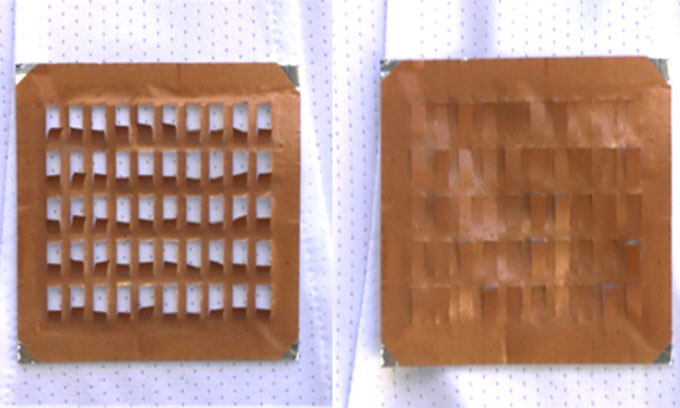Thanks to tiny flaps and a silver coating, the new fabric effectively retains warmth while also providing cooling benefits.
When it’s hot and people sweat, they often prefer airy clothing similar to mesh. However, mesh is not sufficient to keep the body warm under normal conditions. To address this issue, Associate Professor Po-Chun Hsu and colleagues at Duke University in North Carolina have developed a new fabric with breathable vents that automatically open when absorbing sweat. Their research was published in the journal Science Advances on December 15.

The fabric with sweat-activated vents open (left) and closed when dry (right). (Photo: Duke University)
Essentially, the new material is nylon with a thin layer of silver coating and is cut into tiny flaps. When the inner side, which is in contact with the skin and not coated in silver, absorbs water or sweat, it swells. This phenomenon causes the flaps to curve outward. Then, as the material dries, the nylon contracts back to its original size, closing the flaps.
The research team added a 50-nanometer thick silver layer to reflect heat emitted from the body back inside, helping to keep the wearer warm when the flaps are closed. Initially, Hsu was concerned that the weight of the metal layer might impede the flapping effect of the fabric. However, it turns out that the silver actually enhances the effectiveness. The reason is that the silver layer on the top of each flap does not swell, causing the nylon underneath to expand more at the bottom than at the top, further enhancing the curvature.
To test the cooling effectiveness, the scientists created a fabric measuring 6 cm x 6 cm with flaps a few millimeters long. The results showed that compared to a traditional tight fabric made from a polyester-spandex blend, the breathable fabric retains warmth 16% better when the flaps are closed and is 14% cooler when they are open.
Instead of making entire garments from the new fabric, the team believes it could be effective to attach pieces of this fabric to specific areas where people sweat the most. They are researching ways to scale down the flaps without losing their effectiveness and hope to replace the silver with a nanocomposite material that can be produced in any color.


















































